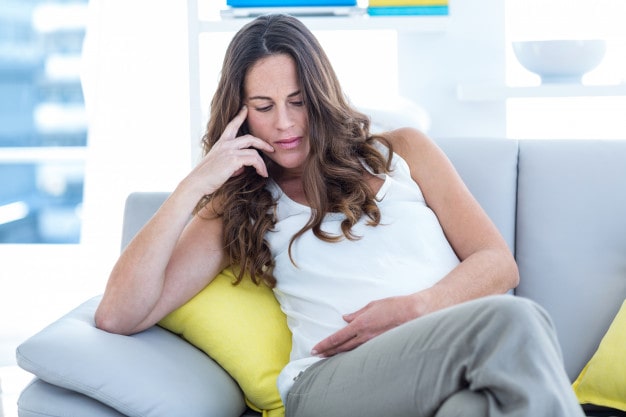Pregnancy and Myoma
The frequency of myoma in 20-25% of women in the normal population is also valid during pregnancy. Whether myoma will cause a problem during pregnancy depends on the time of diagnosis, firstly the location of myoma or myomas, and then their number and size.
Before talking about myoma complications that may occur during pregnancy, you should know that you will not experience complications mostly related to myomas. Only 10% of women with myoma are likely to encounter any problems during pregnancy. These problems can range from pain that will not even need pain relief to premature birth or bleeding threatening the life of mother and baby.
Potential Problems in Pregnancy and Myoma
The main problems that we may encounter during pregnancy and myoma are:
1) inability to conceive or repeated miscarriages especially in submucosal myoma,
2) Threat of preterm birth by bleeding behind the placenta in cases where myoma is located behind the placenta or by initiating spontaneous contraction in the mid-gestation period (20-24 weeks) when the growth rate increases,
3) if the placenta is located on the myoma, the back of the placenta (ablation placenta: detachment bleeding),
4) Increased caesarean rate due to obstruction of the baby’s birth tract with the myoma located in the uterus lower segments or preventing the baby’s head placement and breeding or lateral posture (bleeding behind the placenta also requires caesarean due to vital necessities),
5) After delivery, the contraction mechanism of the uterus due to myoma may be impaired (postpartum haemorrhage: atony bleeding) or if it sticks to the placenta in the presence of myoma behind the placenta, the placenta may not come out and cause severe bleeding.
6) Due to the natural increase in estrogen, the primary nutritional source of myoma, especially in the first half of pregnancy, due to the rapid growth of myoma, they can cause pain that develops due to the degeneration caused by necrosis areas in the myoma. Pregnant women with fibroids or fibroids should definitely evaluate the pain in detail before connecting it to degeneration; It should be ensured that there is no bleeding behind the placenta, the threat of preterm labour or a surgical emergency independent of pregnancy. Therefore, it will be appropriate to be in contact with your physician in any pain.
Often the woman conceived without knowing the existence of myoma before pregnancy. The extent to which myoman will affect pregnancy is of course related to the location, number and size of the myoma. However, evacuation of pregnancy will be too aggressive in a matter of 10% probability. Pregnancy; It would be much more rational to follow up and not terminate the patient by increasing the frequency of follow-up and informing the patient about the details. If pregnancy ends for a reason that we are sure that it is due to myoma during pregnancy, myomectomy can be performed before the next pregnancy.
If the woman has been diagnosed with myoma in her pre-pregnancy checkups, she should be informed in detail about pregnancy and myoma, and the decision to operate should be avoided, except for submucosal myomas and intramural myomas that exert significant pressure on the endometrium. The size of the myomas can also be decided together with their location. In infertile couples scheduled for microinjection, myomectomy decision can be made a little more frequently, but it will be appropriate to perform 6 months before pregnancy. It should be remembered that patients may experience pregnancy difficulties due to adhesions (adhesions) occurring in the abdomen after myomectomy operations. Depending on the size and location of myoma, laparotomy, laparoscopy or hysteroscopy may be preferred for myomectomy.
What should be the mode of delivery after myomectomy?
If only subserosal myoma has been removed and the uterine muscle tissue has not been subjected to a deep incision, normal delivery can be attempted. However, during contractions, the rupture of the uterus (the possibility of rupture) should always be kept in mind and the action should be monitored very carefully. Cesarean application after myomectomy operations will be a much safer delivery method. If myoma has been removed from the inside of the uterus (intramural) or just under the uterus (submucosal), it is logical to terminate the pregnancy by cesarean.
One of the most common issues is whether myomas will be removed in the cesarean order. In very special cases, however, this process is safe in thin-stemmed subserosal myomas. Apart from this, trying to get myoma from the uterus that has just gotten out of pregnancy and trying to recover will be a very haemorrhagic procedure and it is not appropriate to do it.






 Turkish
Turkish Deutsch
Deutsch
 Bu İçeriği Beğendim
Bu İçeriği Beğendim